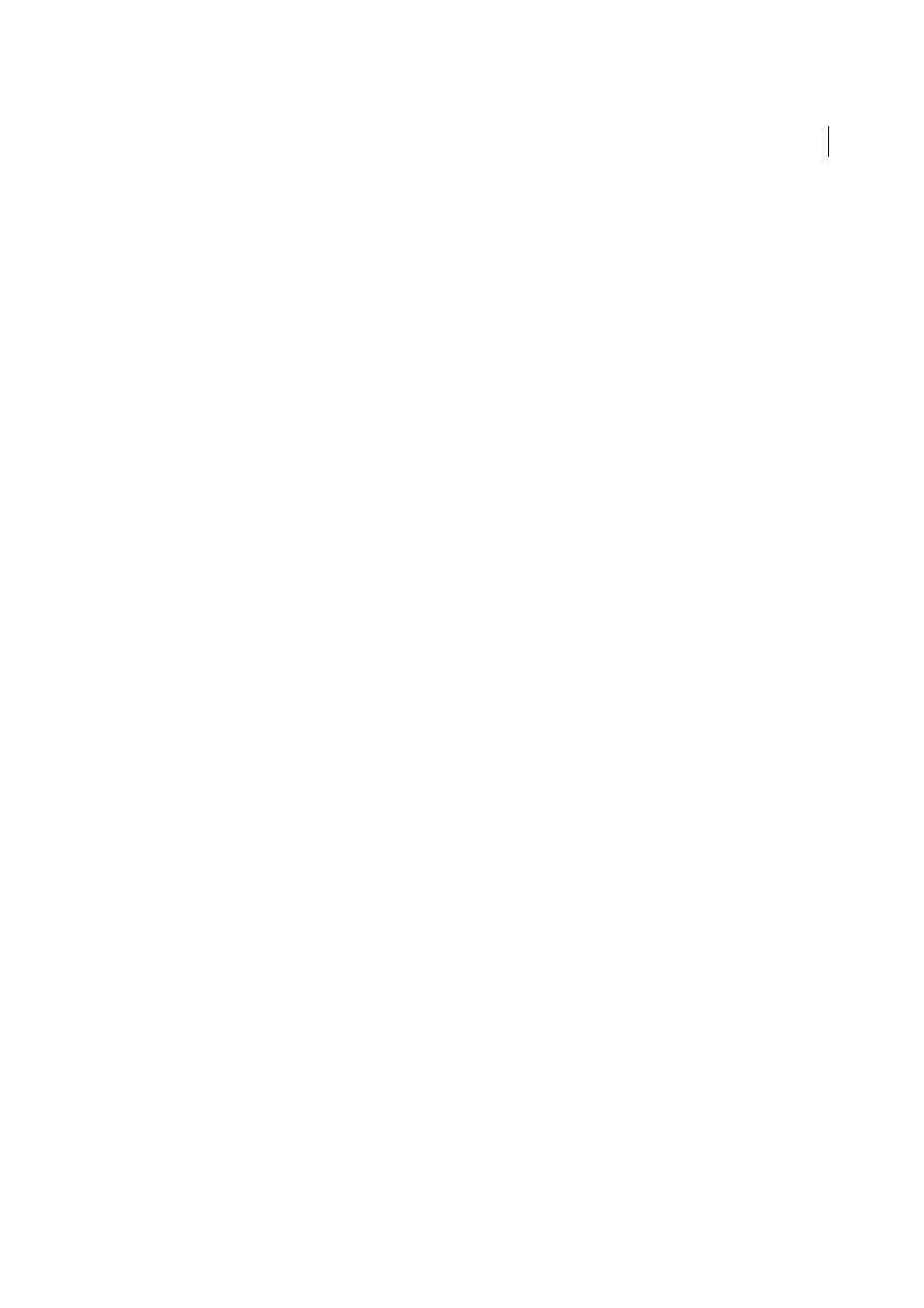Artistic effects, Blur effects – Adobe Illustrator CC 2015 User Manual
Page 448

443
Creating special effects
Last updated 6/5/2015
Artistic effects
Artistic effects are raster-based and use the document’s raster effects settings whenever you apply the effect to a vector
object.
Colored Pencil
Draws an image using colored pencils on a solid background. Important edges are retained and given a
rough crosshatch appearance; the solid background color shows through the smoother areas.
Cutout
Portrays an image as though it were made from roughly cut-out pieces of colored paper. High-contrast images
appear as if in silhouette; colored images are built up as if from several layers of colored paper.
Dry Brush
Paints the edges of the image using a dry-brush technique (between oil and watercolor). The effect simplifies
an image by reducing its range of colors.
Film Grain
Applies an even pattern to the shadow tones and midtones of an image. A smoother, more saturated pattern
is added to the image’s lighter areas. This effect is useful for eliminating banding in blends and visually unifying
elements from various sources.
Fresco
Paints an image in a coarse manner using short, rounded strokes as if hastily applied.
Neon Glow
Adds various types of glows to the objects in an image. This effect is useful for colorizing an image while
softening its look. To select a glow color, click the glow box and select a color from the color picker.
Paint Daubs
Lets you choose from various brush sizes (from 1 to 50) and types for a painterly effect. Brush types
include simple, light rough, light dark, wide sharp, wide blurry, and sparkle.
Palette Knife
Reduces detail in an image to give the effect of a thinly painted canvas that reveals the texture underneath.
Plastic Wrap
Coats the image as if in shiny plastic, accentuating the surface detail.
Poster Edges
Reduces the number of colors in an image according to the Posterization value you set; then finds the
edges of the image and draws black lines on them. Broader areas of the image have simple shading, while fine, dark
detail is distributed throughout the image.
Rough Pastels
Makes an image appear as if stroked with colored pastel chalk on a textured background. In areas of
bright color, the chalk appears thick with little texture; in darker areas, the chalk appears scraped off to reveal the
texture.
Smudge Stick
Softens an image using short diagonal strokes to smudge or smear the darker areas of the images. Lighter
areas become brighter and lose detail.
Sponge
Creates images with highly textured areas of contrasting color as if painted with a sponge.
Underpainting
Paints the image on a textured background, and then paints the final image over it.
Watercolor
Paints the image in a watercolor style, simplifying details, and using a medium brush loaded with water and
color. Where significant tonal changes occur at edges, the effect saturates the color.
Blur effects
The commands in the Blur submenu in the Effect menu are raster-based and use the document’s raster effects settings
whenever you apply the effect to a vector object.
Gaussian Blur
Quickly blurs a selection by an adjustable amount. This effect removes high-frequency detail and can
produce a hazy effect.
Radial Blur
Simulates the soft blur created by a zooming or rotating camera. Choose Spin to blur along concentric
circular lines, and then specify a degree of rotation. Choose Zoom to blur along radial lines, as if zooming in or out of
the image, and specify an amount from 1 to 100. Blur quality ranges from Draft for the fastest but grainy results to Good